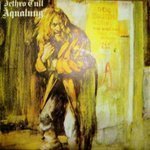Cambodia Expecting A High Tourist Season
-
Recently Browsing 0 members
- No registered users viewing this page.
Announcements
-
Topics
-
-
Popular Contributors
-
-
Latest posts...
-
6
Thai - Cambodia Conflict Cambodia’s ‘White House Journalist’ Revealed as Lobbyist
I watched his video on Thai TV last night.......I can personally vouch for the fact if he an intelligence expert......he shouldn't be. -
75
Opinion Thailand's Visa Shake-Up Threatens Retiree Paradise
Actually, they probably won't. Last time the amounts went up, people who were already here were grandfathered in on the old amounts. But there are some nice bits of the Philippines, and you can join their universal healthcare system as a retiree, and if you're British your state pension doesn't get frozen. I think it's not as nice a place to live as Thailand, more dangerous, worse food, and hospitals are very much down to where you live. English is a lot more widely spoken as well. If I had been married to a Filipina for 26 years, rather than married to a Thai, I would seriously consider it. -
0
Australian 9Now TV
Hi, I am having an isolated issue accessing an Australian Channel 9 whilst in Thailand. Live streaming ‘9Now’, I can watch ‘Live’ broadcasts on all channel with the exception on Channel 9 - the one channel my TV viewing is glued too. Up until yesterday I could watch Channel 9, albeit with some hassles, on either my Mac, iPhone, Android box or Apple TV, but as of today I cannot watch Channel 9 ‘Live’ other than shows which have been run and are in their library, however, I can watch ‘Live’ TV on all other channels ie Gem, Go!, Rush, Life and Crime on all devices. Go figure….. To go through what I have tried and had no success:- Changed IP by changing Australian locations all the time Changed and tried all Protocols, to no avail Re-booted modem several times Cleared ‘Cache’ (Android Box) many, many times Disconnected Wi-Fi on my iPhone All devices update Automatically The majority (90%+) of my viewing is through the Android Box. Over the last few days I have had trouble watching Channel 9 ‘Live’, I got a work around by utilising the ‘Casting’ or ‘Airplay’ however that is now not possible. On saying that ‘Casting’ was usually OK but ‘Airplay’ was usually a no go. Interested to hear if anyone out there is having the same problems -
56
Report Thailand Shuts 1,000 Cannabis Shops in Sweeping Crackdown
What they don't report is who owned the shops. Are we supposed to believe they are all young entrepreneurs with only one or two shops each? Or, as might be the case, a few big money owners that were friends with the party that pushed for legalization? Could be both I guess, but things always happen for a reason here.. not just out of enforcing the laws. And not because a handful of people complained about the shops. There's one a stones' throw from my place. It's still open. -
6
Thai - Cambodia Conflict Cambodia’s ‘White House Journalist’ Revealed as Lobbyist
Would they admit it if he was " intelligence expert from the White House" -
5
BA pilot left cockpit door open ‘so family could see him
Not as bad as the halfwit (Russian) pilot who let his son sit in his seat on a flight to Hong Kong......... the son accidentally put the plane into a step dive and killed all 75 people on board......oops!!!
-
-
Popular in The Pub








Recommended Posts
Create an account or sign in to comment
You need to be a member in order to leave a comment
Create an account
Sign up for a new account in our community. It's easy!
Register a new accountSign in
Already have an account? Sign in here.
Sign In Now